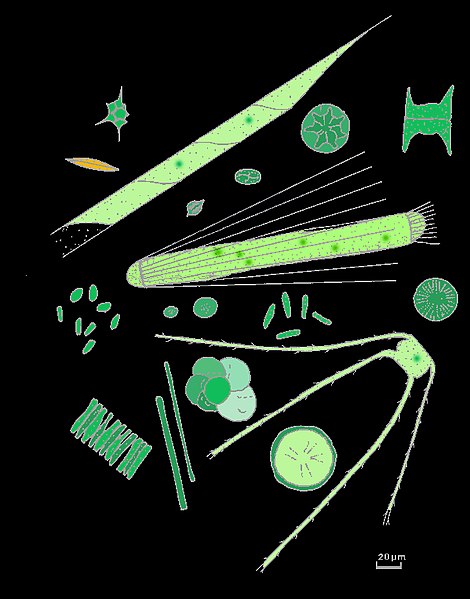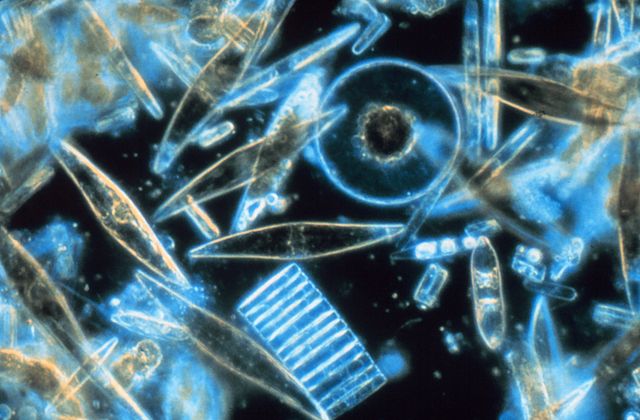The sunlight zone is 200 meters deep.The photic zone, euphotic zone, epipelagic zone, or sunlight zone is the uppermost layer of a body of water that receives sunlight, allowing phytoplankton to perform photosynthesis. It undergoes a series of physical, chemical, and biological processes that supply nutrients into the upper water column. The photic zone is home to the majority of aquatic life due to the activity of the phytoplankton. The thicknesses of the photic and euphotic zones vary with the intensity of sunlight as a function of season and latitude and with the degree of water turbidity. The bottommost, or aphotic, zone is the region of perpetual darkness that lies beneath the photic zone and includes most of the ocean waters.
Comparison of the depths which different colors of light penetrate open ocean waters and the murkier coastal waters. Water absorbs the warmer long wavelengths colours, like reds and oranges, and scatter the cooler short wavelength colours.
Intricate silicate (glass) shell, 32-40 million years old, of a diatom microfossil
Drawn image of a phytoplankton
Phytoplankton are the autotrophic (self-feeding) components of the plankton community and a key part of ocean and freshwater ecosystems. The name comes from the Greek words φυτόν, meaning 'plant', and πλαγκτός, meaning 'wanderer' or 'drifter'.
Some types of phytoplankton (not to scale) Left to right: cyanobacteria, diatom, dinoflagellate, green algae and coccolithophore
Diatoms are one of the most common types of phytoplankton
Coccolithophores are armour-plated
The dinoflagellate Dinophysis acuta







